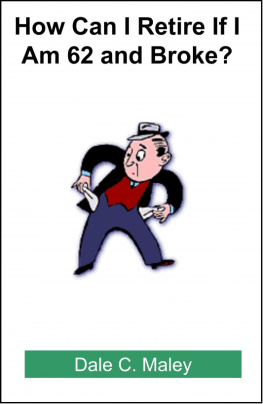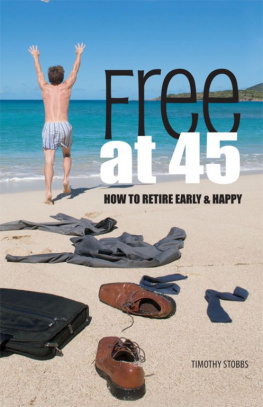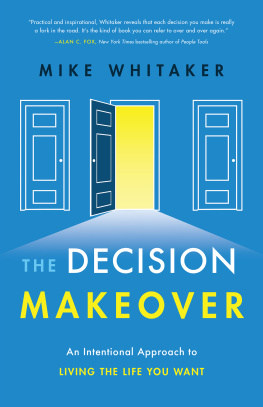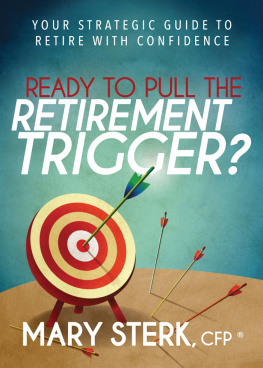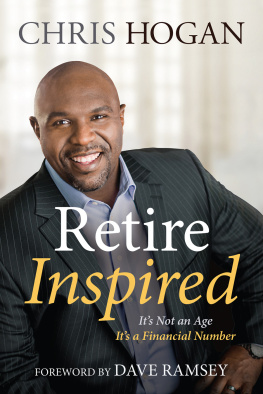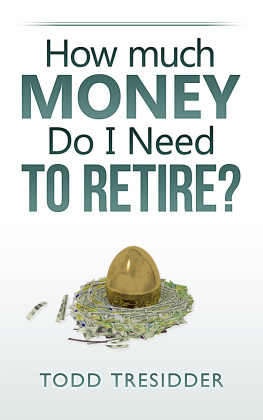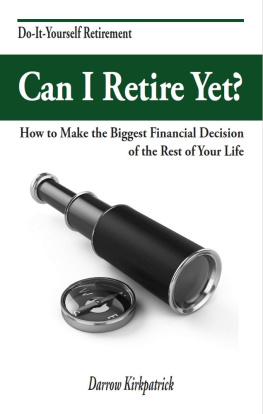

Copyright 2013 by Stan Hinden. All rights reserved. Except as permitted under the United States Copyright Act of 1976, no part of this publication may be reproduced or distributed in any form or by any means, or stored in a database or retrieval system, without the prior written permission of the publisher.
ISBN: 978-0-07-180070-9
MHID: 0-07-180070-0
The material in this eBook also appears in the print version of this title: ISBN: 978-0-07-180069-3, MHID: 0-07-180069-7.
All trademarks are trademarks of their respective owners. Rather than put a trademark symbol after every occurrence of a trademarked name, we use names in an editorial fashion only, and to the benefit of the trademark owner, with no intention of infringement of the trademark. Where such designations appear in this book, they have been printed with initial caps.
McGraw-Hill eBooks are available at special quantity discounts to use as premiums and sales promotions, or for use in corporate training programs. To contact a representative please e-mail us at bulksales@mcgraw-hill.com.
TERMS OF USE
This is a copyrighted work and The McGraw-Hill Companies, Inc. (McGraw-Hill) and its licensors reserve all rights in and to the work. Use of this work is subject to these terms. Except as permitted under the Copyright Act of 1976 and the right to store and retrieve one copy of the work, you may not decompile, disassemble, reverse engineer, reproduce, modify, create derivative works based upon, transmit, distribute, disseminate, sell, publish or sublicense the work or any part of it without McGraw-Hills prior consent. You may use the work for your own noncommercial and personal use; any other use of the work is strictly prohibited. Your right to use the work may be terminated if you fail to comply with these terms.
THE WORK IS PROVIDED AS IS. McGRAW-HILL AND ITS LICENSORS MAKE NO GUARANTEES OR WARRANTIES AS TO THE ACCURACY, ADEQUACY OR COMPLETENESS OF OR RESULTS TO BE OBTAINED FROM USING THE WORK, INCLUDING ANY INFORMATION THAT CAN BE ACCESSED THROUGH THE WORK VIA HYPERLINK OR OTHERWISE, AND EXPRESSLY DISCLAIM ANY WARRANTY, EXPRESS OR IMPLIED, INCLUDING BUT NOT LIMITED TO IMPLIED WARRANTIES OF MERCHANTABILITY OR FITNESS FOR A PARTICULAR PURPOSE. McGraw-Hill and its licensors do not warrant or guarantee that the functions contained in the work will meet your requirements or that its operation will be uninterrupted or error free. Neither McGraw-Hill nor its licensors shall be liable to you or anyone else for any inaccuracy, error or omission, regardless of cause, in the work or for any damages resulting therefrom. McGraw-Hill has no responsibility for the content of any information accessed through the work. Under no circumstances shall McGraw-Hill and/or its licensors be liable for any indirect, incidental, special, punitive, consequential or similar damages that result from the use of or inability to use the work, even if any of them has been advised of the possibility of such damages. This limitation of liability shall apply to any claim or cause whatsoever whether such claim or cause arises in contract, tort or otherwise.
For Sara, who made the journey with me
Contents
Foreword
Congratulations! You are about to read the splendid new edition of a wonderful, sensible, and simple book that will be a priceless asset to you. If youre thinking about retiring, have decided to retire within the next several years, or have decided not to retire just yetor even if you retired some years agoStan Hindens book will help you analyze the 12 vital decisions you must make at retirement and offer expert advice in each areaand do so in words that are easy to read, bereft of financial jargon and gobbledygook.
I happen to be in the category not ready to retire. While Im chronologically 83 years of age, if you measure by the age of the heart that was transplanted into my chest some 17 years ago, Im a mere child of 43. I love my work too much to stop just yet. But Ive already personally considered many of the decisions that Stan discusses, and I will be that much better prepared when (and if!) I finally decide to retire.
Most of my own expertise, such as it may be, is in the world of finance. My entire six-decade-plus career has been in the mutual fund industry, and I fully endorse just about every one of Stan Hindens recommendations about investing for, and in, retirement. To be able to afford a comfortable retirement, for example, importantly depends on the power of time and the magic of long-term compounding of investment returns, all the while sidestepping the tyranny of compounding excessive investment costs. Almost invariably, such a strategy is best implemented by using cost-efficient, tax-efficient index funds, a breed that is at last getting the widespread acceptance that it merits.
Income in Retirement
For most families, Social Security is a critical part of retirement income. Although we cant control the schedule of benefits, we can control the time when our payments begin. The advice this book gives is good: the longer you wait (up to age 70), the larger the check youll receive thereafter. While Social Security is designed to provide a minimal standard for retirement income, its stream of benefits can be estimated to have a capital value of some $300,000 at age 70. That value is even better than it looks, for it is the equivalent of a fixed-income investment with a built in hedge against inflationtwo priceless assets when you retire.
Stan Hindens book is also right on the mark in its chapters on making decisions about company pensions, 401(k) corporate thrift plans, and individual retirement accounts. His advice benefits greatly from his firsthand experience (some derived from his own investment mistakes) as he presents important information on investing during retirementvirtually all of which I heartily endorse. His five Golden Rules are, well, golden. Yet they are so simple and basic that too many investors pay no attention to them and suffer the consequences.
His advice on asset allocation and the need for significant holdings in bonds or annuities to produce income is also well worth heeding. That advice may have seemed too cautious in 2000 when the first edition of this book was published, right after the greatest bull market in history. But now, after two stock market crashes (in 20002002 and again in 20072009), the advice seems almost prescient.
Indeed, the kind of balanced approach to investing that Stan recommends has performed admirably in the 11 years since I wrote the foreword to the first edition of How to Retire Happy in August 2000. For example, a $10,000 investment in Vanguard Wellington Funda conservative balanced fund with about 65 percent of its assets in stocks and 35 percent in bondswould have provided an average annual return of 7 percent per year. That is, by August 2012, it would have grown to $22,500, assuming that all dividends were reinvested. While many investors complain about returns in the lost decade, that outcome seems remarkably satisfactory.
Investing Today
Alas, I must caution you that such a generous return is unlikely to recur in the coming decade. Current conditions in the financial markets are more challenging. In the bond market, the yield on the 10-year U.S. Treasury note has plummeted from 6 percent to just 1.6 percent, suggesting a reduction of some 70 percent(!) in bond returns during the years ahead. Some enhancement in return could be achieved by placing greater emphasis on an investment-grade corporate bond index fund, which now yields about 3 percent. There is, of course, some extra credit risk involved, and you should carefully consider this before you take action.
Next page

